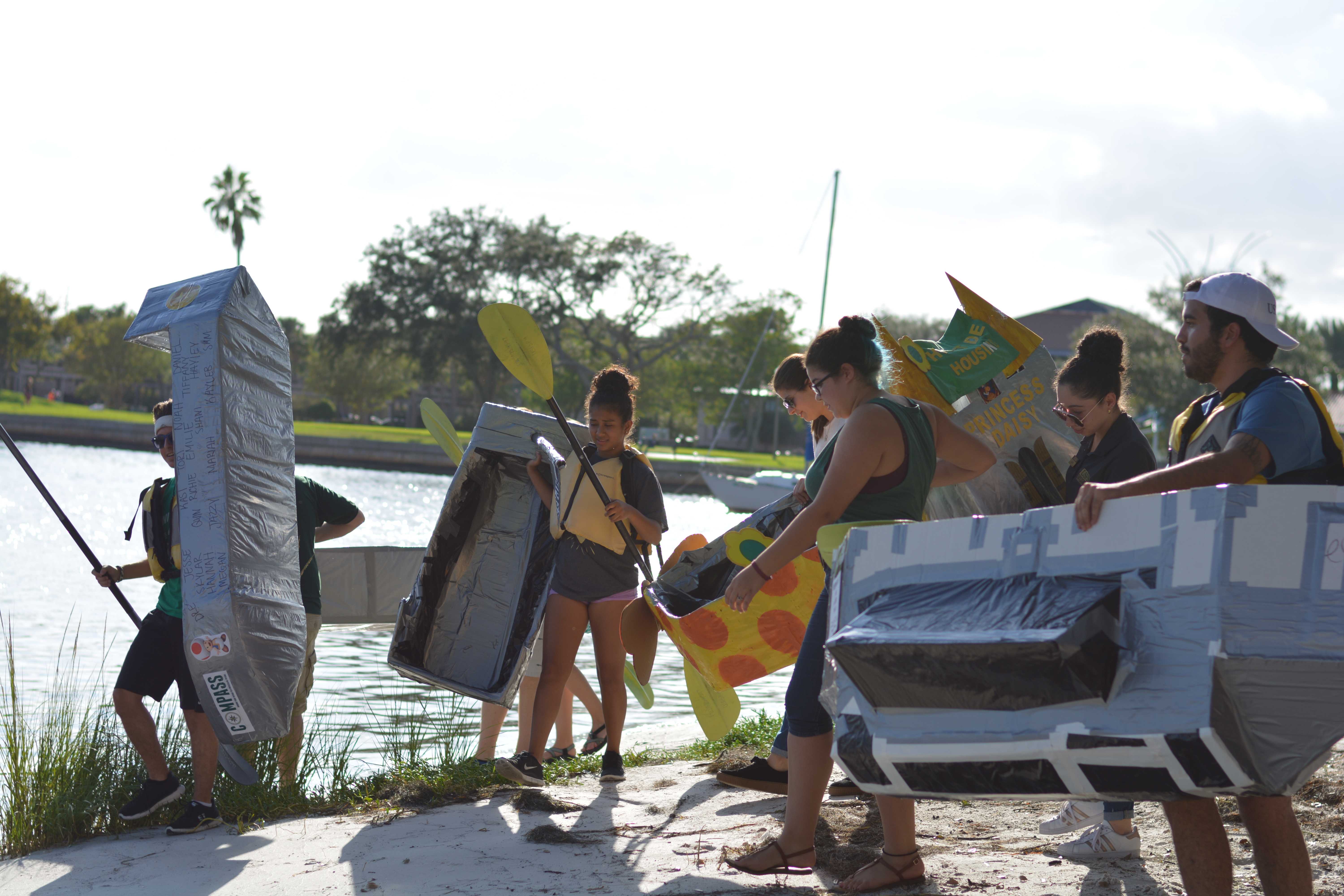By Emily Wunderlich
After polling campus attitudes toward Greek life last month, Student Government hosted a town hall Nov. 13 to share the results with the student body.
Not only did the event struggle to fill seats in the regional chancellor’s conference room, it lacked the most important component: students.
Among the attendants were faculty members from USF Tampa and USF St. Petersburg. The handful of students present were mainly organization leaders, with the exception of two or three freshmen.
The town hall’s disappointing turnout was not a first for events on campus as it struggles to transition from a mostly commuter-based school.
Albert Moreno, graduate student and appropriations chair, said student involvement has decreased since he began attending the university in 2015.
“If we’re spending thousands upon thousands of dollars on things that students aren’t interested in, then essentially we’re wasting tons of money, and we’re going to continue wasting tons of money because we don’t know what the alternative could be,” Moreno said.
SG is exploring Greek life as a method of reviving student involvement around campus in hopes that it will create more traditions and boost attendance at events.
A recent survey asked students if they were interested in bringing Greek life to campus. 63 percent said yes. However, the survey drew 505 respondents — a troubling figure for a school with over 4,800 students. To put it in perspective, SG is relying on the feedback of only 10 percent of the student population.
Patricia Helton, regional vice chancellor of Student Affairs, said this is a risk worth taking.
“I think you have to use a buckshot approach, because what you might like might not be what the next person would like, so I think you have to try a variety of different things,” she said.
Cost to students
Each student pays an Activities and Services fee of $25.63 per credit hour or $307.56 for a full-time student in a semester of 12 credit hours. These fees fund organizations on campus, such as the University Student Center, Harborside Activities Board, Waterfront, Campus Recreation and The Crow’s Nest.
Low attendance at events translates to cuts in the A&S budget, Moreno said.
“If students voice their opinion and they say ‘hey, we want this,’ let’s make it happen. But up until now I’ve not been hearing any students’ voices.”
Moreno says so far, SG’s attempts to pinpoint student interests have not been successful.
“We’re supposed to be the voices of the students, of our constituents, of our fellow people, and we’re not doing the greatest job of that,” he said. “Every now and again, we’ll try to talk to students or we’ll have events where you can come and meet us and talk to us about your concerns, issues, hopes, what you would like to see — never a good turnout. So, the current methods that we have in place are not getting good results.”
He also says that the program used for tracking these metrics is flawed.
Any time a club or organization hosts an event on campus, they are expected to take attendance using PeteSync — the university’s database for extracurriculars.
When students swipe their ID cards, they are marked as present and receive Pete Points, which can be auctioned off at the end of the year in exchange for prizes.
Moreno said clubs and organizations have not been consistent in keeping up with this system.
“I would like to see the departments and any club that is funded with A&S fees and putting on events using A&S money to use the scanner, that way we can have quantifiable statistics as in how many people are attending these events,” he said.
“We have not been holding anyone accountable to the money that they’ve received and how they’ve spent it, and that’s something that needs to change.”
No definitive solution
The Division of Student Affairs is preparing to launch a Student Advisory Council as another outlet of generating student feedback. According to Helton, surveys and small focus groups have not been enough.
“There are certain things that students will give you a lot of feedback on, and other things they just don’t comment on,” she said. “We can sit around in offices and come up with things, but it’s not necessarily what the students want, so we need to go where the students are telling us they want to go.”
Helton said that involvement plays a critical role in determining whether students complete their degrees.
“A lot of the research shows us that students that are engaged persist, and they graduate,” she said.
To tackle the problem of low turnout at events, the university must first consider how they are advertised. For Helton, this presents a great challenge.
“What’s the best way to get news out to students,” she wondered. “Is it signage? Is it chalking on sidewalks? Social media?”
“I think we’re trying to figure out the culture here and what works best,” Helton said.
The survey did not draw data regarding commuter versus resident interests in Greek life, but Moreno believes that the divide is clear between who wants to be involved and who doesn’t.
“It’s very difficult when you have a predominantly commuter campus,” he said. “A lot of people just want to go to classes and get out of here — completely understandable. If that’s going to be the case, then we need to focus on those that actually do want to participate.”
However, Helton believes that commuters do want to get involved, but are seeking the right opportunities to do so.
“Often times, commuter students want a way to plug into the institution,” she said. “I don’t think that Greek life is just for residential students. I definitely think that there are a lot of students that are maybe living at home that want to be involved but they just aren’t sure where to get the connection.”
While Helton does not think there is one definitive solution to the student involvement problem, she does see potential in Greek life.
“I think that (Greek life) could be a good opportunity, but I don’t think it’s ‘the one answer’ that’s going to change student involvement or student engagement on campus,” she said.
“I don’t think it’s ever going to be ‘50 percent of the students want (Greek life),’ but we don’t need 50 percent of the students to want it for it to be beneficial to 20 percent of the population,” Helton said.
Above image caption: The homecoming cardboard boat race is one of the biggest events of the year in terms of turnout. SG and the Division of Student Affairs hopes Greek life will create more traditions such as these to boost student involvement. Emily Wunderlich | The Crow’s Nest



